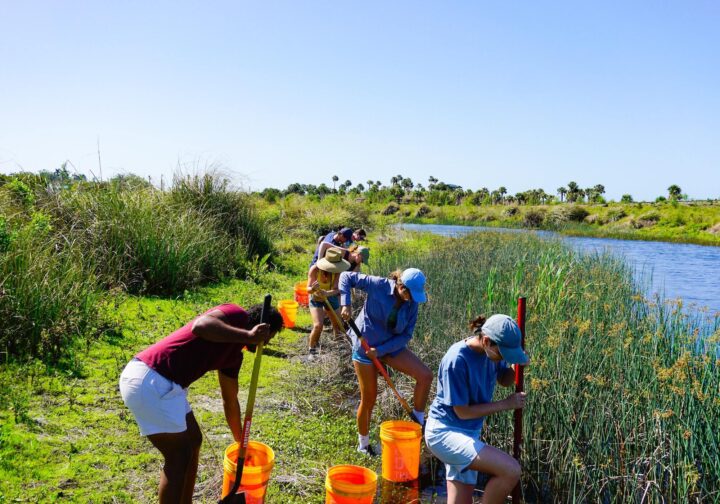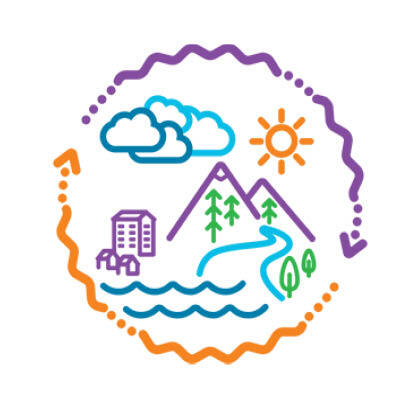Designing Climate Change Learning for Action

- Teachers should support students in developing a common language and understanding around climate change by supporting solution-based learning and thus fostering hope through action.
- District Staff & PD Providers need to facilitate community-based learning with community partners, students, and educators as they learn about climate change and climate justice as well as act on what they learn.
- School Leaders should listen to students who have ideas about the type of community they want to live in and consider how to engage them in opportunities for action.
What Is The Issue?
One strategy to foster hope in an era of climate change is to support youth in taking action within their own spheres of influence. Students are taking action about climate change, and they are looking to their educators to support their learning in this area. Yet some educators are reluctant to design empowering experiences focused on learner agency because it can be misinterpreted as “political action” or “ideological indoctrination.” We suggest framing climate change learning along lines of civic engagement and engineering design, in which students identify and research a real world problem and define and work towards outcomes desirable to their communities.
Authors:
BY ELIZABETH SCHMITZ, DEB L. MORRISON, JEANNE NORRIS, MEREDITH LOHR, SAHAR ARBAB, BRIAN MACNEVIN, BECKY BRONSTEIN, ANNITRA PECK, STACY MEYER, PRISCILLA BROTHERTON | SEPTEMBER 2022
REFLECTION QUESTIONS
- What is the responsibility of schools to foster civic engagement as it relates to climate change action?
- What benefits do school- and community-focused climate action have on community and regional sustainability?
- What student-innovated solutions can be centered in instruction and foster equity and justice?
Things To Consider
- People are becoming more alarmed about climate change and fewer people doubt that climate change is being caused by human actions.
- People want to take action but may not know what actions are best to take. There is significant support for policy-level climate action but less understanding about how to learn about our own behavioral changes.
- Youth want to learn about climate change, understand what actions are being taken, and learn how they can contribute to solutions. You should connect them to organizations like the Sunrise Movement, Youth Climate Action, The Global Youth and Mayors Forum, and Roots & Shoots.
- Activism can serve as a buffer to climate change anxiety experienced as students learn about local and global impacts of climate change, and collective action is one method for coping with this anxiety.
Attending to Equity
- Ecopedagogies can be used to empower youth to examine issues of environmental justice in their community.
- The most severe impacts of climate change disproportionately affect underserved communities who are least able to prepare for, and recover from, extreme weather and pollution. Centering their interests require collective action. Also, every community is affected and so every community should have access to information about how climate change is impacting them locally and how to be involved in local decision making.
- Education is integral to ensure access and opportunities are available to every person; learning opportunities around climate science must be provided for each and every student. This learning must be contextualized for students’ lived experiences, their specific interests and identities, and for the issues most meaningful to their communities.
Recommended Actions You Can Take
- Consider how to navigate conversations with community members. Create space for discussion of eco-anxiety and gear student discourse towards action. Explore the political dimensions of climate change learning and this EPA overview of environmental education. Unpack language of action-oriented learning to ensure shared meanings—given that words have political and cultural differences in meaning.
- Develop your knowledge on climate change. Address arguments that climate change is “just” a theory, or out of human control, including ideas about scientific consensus and models, and past examples of collective action. Read climate reports (IPCC, NOAA) and recommendations. Learn how scientists and activists engage in action by following accounts and hashtags such as @NASAClimate, @UNCCLearn, @NOAAClimate, @ClimateGenOrg, #ClimateAction, #ClimateEmergency, #ClimateJustice, and #TeachClimate.
- Build a partnership network. Reach out to community partners such as businesses, universities, scientists, government, Tribal Nations, and families. Build a unified team, including school administrators. Connect with educators locally and nationally. Find and share resources such as The Climascope Project.
- Connect climate change to your school and community. Explore connections between global climate change and impacts on your community. Consider what action can be taken. Codesign actions with students, community partners, and families. Encourage students to identify solutions. Explore climate change actions by grade-band.
- Design interdisciplinary lessons including civics and Career and Technical Education (CTE). Educators can support students in media and digital literacy to both promote socio-emotional wellbeing and deepen critical thinking within science learning.
Supplemental Materials
- Glossary of Common “Learning for Climate Action” Terms
- Grade-Banded Examples of Climate Change Learning for Action
ALSO SEE STEM TEACHING TOOLS
STEM Teaching Tools content copyright 2014-22 UW Institute for Science + Math Education. All rights reserved.
This site is primarily funded by the National Science Foundation (NSF) through Award #1920249 (previously through Awards #1238253 and #1854059). Opinions expressed are not those of any funding agency.
Work is licensed under a Creative Commons Attribution-ShareAlike 4.0 Unported License. Others may adapt with attribution. Funded by the National Science Foundation (NSF). Opinions expressed are not those of any funding agency.


 Email Feedback
Email Feedback


